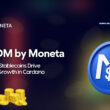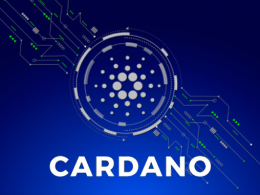As blockchain technology and digital assets continue to evolve, Non-Fungible Tokens (NFTs) have emerged as a versatile innovation in digital asset management, enabling the tokenization of unique digital assets such as art, collectibles, virtual real estate, and more. While Ethereum has been the dominant platform for NFT implementation, Bitcoin NFTs have garnered considerable interest in the crypto space. For the first time, NFTs have been introduced to the Bitcoin blockchain, extending its functionality beyond financial transactions.
In this article, we’ll explore the technical foundations of Bitcoin Ordinals, the technology that enables them, and the key differences between Ethereum and Cardano NFTs.
What are Bitcoin Ordinals?
Launched by developer Casey Rodarmor on January 20, 2023, Ordinals represent a groundbreaking approach to creating Non-Fungible Tokens (NFTs) on the Bitcoin mainnet. Although Bitcoin-based NFTs aren’t entirely new, with layer-2 networks like Counterparty and Stacks facilitating them, Ordinals offer a unique perspective on NFTs within the Bitcoin ecosystem. This innovative method avoids the use of sidechains or layer-2 solutions, opting instead to store NFTs natively on the Bitcoin blockchain.
The Ordinals protocol enables Bitcoin node operators to inscribe satoshis, the smallest unit of Bitcoin, with arbitrary content, leading to the creation of Bitcoin-native artifacts. This inventive approach allows satoshis to store various forms of media, such as images and videos, directly on the Bitcoin mainnet.
So, how does that work?
Upgrades of Bitcoin, such as the SegWit and Taproot upgrades, have significantly contributed to the development of Ordinals, providing increased flexibility within the Bitcoin ecosystem.
So let’s take a look at how these two upgrades laid the ground work for the creation of ordinals NFTs.

The SegWit Upgrade
The Segregated Witness (SegWit) upgrade, implemented in August 2017 via Bitcoin Improvement Proposal 141 (BIP141), was a critical development for the Bitcoin protocol. Proposed by Bitcoin developer Pieter Wuille, SegWit aimed to address Bitcoin’s scalability issues, transaction malleability, and other concerns.
From an Ordinal NFT perspective, the SegWit upgrade played a significant role in enabling the storage of NFT content within the Bitcoin blockchain. SegWit introduced a new witness field in transaction outputs, primarily intended for privacy and performance improvements.

While not explicitly designed for data storage, this witness field provided the opportunity to store NFT content, paving the way for the creation and management of NFTs on the Bitcoin network.
SegWit also increased the effective block size limit from 1MB to 4MB, allowing for more transactions, including NFT-related transactions, to be processed per block. This increase in transaction capacity improved the overall throughput of the Bitcoin network, making it more suitable for handling NFT transactions alongside regular Bitcoin transactions.
The Taproot Upgrade
Activated in November 2021 through Bitcoin Improvement Proposal 341 (BIP341), the Taproot upgrade aimed to enhance privacy, efficiency, and flexibility in Bitcoin transactions. Proposed by Bitcoin developer Pieter Wuille, Taproot introduced significant improvements to the Bitcoin ecosystem, particularly for the implementation of Ordinal NFTs.
From an Ordinal NFT perspective, the Taproot upgrade enabled inscriptions by introducing a new way to store various types of content, such as text, images, or videos, within a satoshi. Taproot utilized the Schnorr signature scheme, Merkle trees, and the Merkelized Alternative Script Tree (MAST) to enable the storage of nearly 400,000 bytes of arbitrary data in the witness field of a transaction.
Understanding Inscriptions: Storing Arbitrary Content on Satoshis
Inscriptions offer a way to store arbitrary content on a satoshi within the Bitcoin blockchain without requiring a separate token. To create an inscription, the arbitrary data contents are inputted into the witness data section of a Bitcoin transaction and stored in taproot script-path spend scripts. These scripts have minimal content restrictions and receive a witness discount, making the storage of inscription content relatively economical.
An inscription consists of a MIME type, which represents the content type, and the content itself, stored as a byte string. This setup allows web servers to return inscription content and enables the creation of HTML inscriptions that use and remix the content of other inscriptions. When inscribing a satoshi, data is wrapped in a taproot script and stored in the witness data section of a transaction. The relaxed size limits for Taproot scripts facilitate the storage of larger amounts of data in inscriptions.
To create and manage inscriptions, users need to install Bitcoin Core (version 24 or newer) and run a full node with a Bitcoin Core wallet. The “ord” client, which works in conjunction with Bitcoin Core, is necessary for creating inscriptions and tracking individual satoshis. Without the ord client, a Bitcoin Core Wallet cannot distinguish between inscribed satoshis and regular satoshis.
The fee for inscribing arbitrary data to a satoshi primarily depends on the data size, which influences the total transaction weight.
Understanding Ordinal Theory
Ordinal theory introduces a distinctive numbering system for satoshis, the most basic unit of Bitcoin. This approach enables tracking and transferring individual satoshis using ordinal numbers, which are determined by the mining order. The movement of satoshis between transaction inputs and outputs follows a first-in-first-out principle, making ordinal theory effective without requiring a separate token, an additional blockchain, or modifications to Bitcoin.
Ordinal numbers offer various representations, including integer notation, decimal notation, degree notation, percentile notation, and even encoding using characters a to z. These stable identifiers can be employed to attach diverse assets, such as NFTs, security tokens, accounts, or stablecoins, to satoshis.
The open-source Ordinals initiative comprises a BIP outlining the ordinal system, an index interacting with a Bitcoin Core node, an ordinal-aware wallet for transactions, a block explorer, features for inscribing satoshis with digital artifacts, and a comprehensive manual.
Ordinal theory also encompasses the notion of rarity, which is based on recurring Bitcoin events like blocks, difficulty adjustments, halvings, and cycles. This classification leads to rarity levels, such as common, uncommon, rare, epic, legendary, and mythic. Degree notation is employed to unambiguously depict ordinal numbers, allowing for easy identification of a satoshi’s rarity at a glance.

Limitations of Bitcoin as an NFT platform
While Bitcoin has been a revolutionary force in the world of cryptocurrencies, it’s limitations as an NFT platform are apparent. One primary constraint is the lack of robust smart contract functionality in its native scripting language, Script. This restriction hampers the ability to implement advanced NFT features on the Bitcoin network, which we will further explore below.
- Auctions: Auctions are essential for facilitating the price discovery of unique digital assets, such as NFTs. Bitcoin’s limited smart contract capabilities make it challenging to create decentralized auction mechanisms directly on the blockchain, affecting the ease and efficiency of trading NFTs.
- Mass mints: Mass minting refers to the creation of multiple NFTs simultaneously, a process that is often employed by artists and creators to launch collections or editions. The lack of advanced smart contract functionality on the Bitcoin network makes mass minting cumbersome, limiting the scope for large-scale NFT projects.
- Harberger Tax: Harberger tax is an economic concept that can be applied to NFTs to create a more efficient and dynamic market for digital assets. It involves setting a self-assessed value for an asset (in this case, an NFT) and paying a tax based on that value. The asset can be purchased by anyone at the self-assessed price, encouraging the owner to price the asset fairly to balance between tax liability and the risk of losing the asset. Implementing such a system requires advanced smart contract capabilities that Bitcoin’s Script language does not support.
These limitations, among others, lead to Bitcoin-based NFTs often being perceived as on-chain graffiti rather than fully functional digital assets. While they may contribute to the fee market to a certain extent, their practical applications are restricted. Furthermore, the lack of a mature ecosystem of tools, platforms, and marketplaces tailored for NFT creation, management, and trading exacerbates the challenges of using Bitcoin as an NFT platform.
Cardano NFTs and Bitcoin NFTs
A brief introduction to technical details behind Cardano NFTs
The technical implementation of NFTs on Cardano involves several key concepts, including native assets, the Extended UTXO (eUTXO) model, and metadata.
1. Extended UTXO (eUTXO) Model:
Cardano uses the Extended UTXO (eUTXO) model, which is a more advanced version of Bitcoin’s Unspent Transaction Output (UTXO) model.
In the eUTXO model, tokens are bundled together with ADA in transaction outputs, and each output has a unique address. When a user transfers an NFT, the associated transaction output is consumed, and a new one is created at the recipient’s address. The eUTXO model ensures better scalability and parallel transaction processing, making it more suitable for NFTs and other complex applications.
2. Native Assets:
Unlike Ethereum, where tokens are created and managed through smart contracts, Cardano has built-in support for custom tokens, known as native assets. Native assets are an integral part of the Cardano ledger and can be created without deploying smart contracts. This design brings benefits such as reduced complexity, lower transaction fees, and enhanced security.
To create an NFT on Cardano, a user mints a native asset with unique properties and a supply of one, ensuring its non-fungibility. The Cardano-native assets follow the Cardano Token Registry, which allows for standardized handling of custom tokens and provides information such as the asset’s name, policy, and other details.
3. Metadata:
One of the critical aspects of NFTs is the ability to associate additional information with the token, such as the artwork, creator, or other relevant details. Cardano allows users to attach metadata to transactions, which can be used to store this information. Metadata on Cardano is stored off-chain, keeping the blockchain lightweight and enabling efficient querying of NFT-related data. This off-chain storage also ensures that the Cardano network remains scalable and efficient.
In summary, Cardano NFTs benefit from the platform’s advanced features, including native assets, the Extended UTXO (eUTXO) model, and metadata. Native assets simplify the process of creating and managing custom tokens, including NFTs, without the need for smart contracts.
The eUTXO model enhances scalability and parallel transaction processing, making Cardano more suitable for NFTs and other complex applications. Metadata allows users to attach additional information to NFTs while keeping the blockchain lightweight and efficient.
However, given that Cardano shares a similar ledger architecture with Bitcoin, one might wonder if it would be possible to implement something like Cardano Ordinals in a manner similar to how Bitcoin did. The answer is yes!
How to implement Ordinals on Cardano?
When comparing Bitcoin-based NFTs and Cardano NFTs from a technical perspective, we can analyze how the Taproot system and the interpretation of sats (or lovelaces in Cardano) as ordinals can be implemented in both ecosystems.
1. Taproot System Cardano
In Cardano, the Taproot system can be implemented using metadata provisions or inline datums, which can be utilized to store additional information associated with NFTs. The metadata functionality in Cardano ensures that the blockchain remains lightweight, as NFT data is stored off-chain.
2. Interpretation of Sats (or Lovelaces) as Ordinals
Interpreting sats as ordinals in the Bitcoin ecosystem would involve assigning a unique number (an ordinal) to each satoshi, the smallest unit of Bitcoin.
Implementing the interpretation of lovelaces (the smallest unit of ADA) as ordinals in Cardano is more challenging due to the complexity of the platform’s ledger rules. To give every lovelace a unique ordinal number, one would need to devise an interpretation of the ledger rules that accommodates this concept.
This approach would primarily be an experimental exercise with no immediate practical benefits.
Conclusion
Blockchain technology has significantly advanced in recent years, with innovations such as Non-Fungible Tokens (NFTs) adding new layers of functionality and utility to digital assets.
While Bitcoin has been a pioneer in the cryptocurrency space, it currently lags behind platforms like Cardano and Ethereum in terms of supporting simple features like NFTs. The limitations of the Bitcoin network, primarily due to its lack of Native token standards and advanced smart contract functionality, restrict its ability to effectively manage NFTs and facilitate their trading, hindering the growth and development of a comprehensive NFT ecosystem.
In contrast, platforms like Cardano, with its native assets, the eUTXO model, and metadata support, offer a more scalable, secure, and efficient environment for unique digital assets, making them better suited for the growing NFT market.
References
https://twitter.com/ercwl/status/1619712091660894210?s=20
https://twitter.com/rot13maxi/status/1619713017159245824?s=20
https://twitter.com/SebastienGllmt/status/1624484637979574273?s=20











